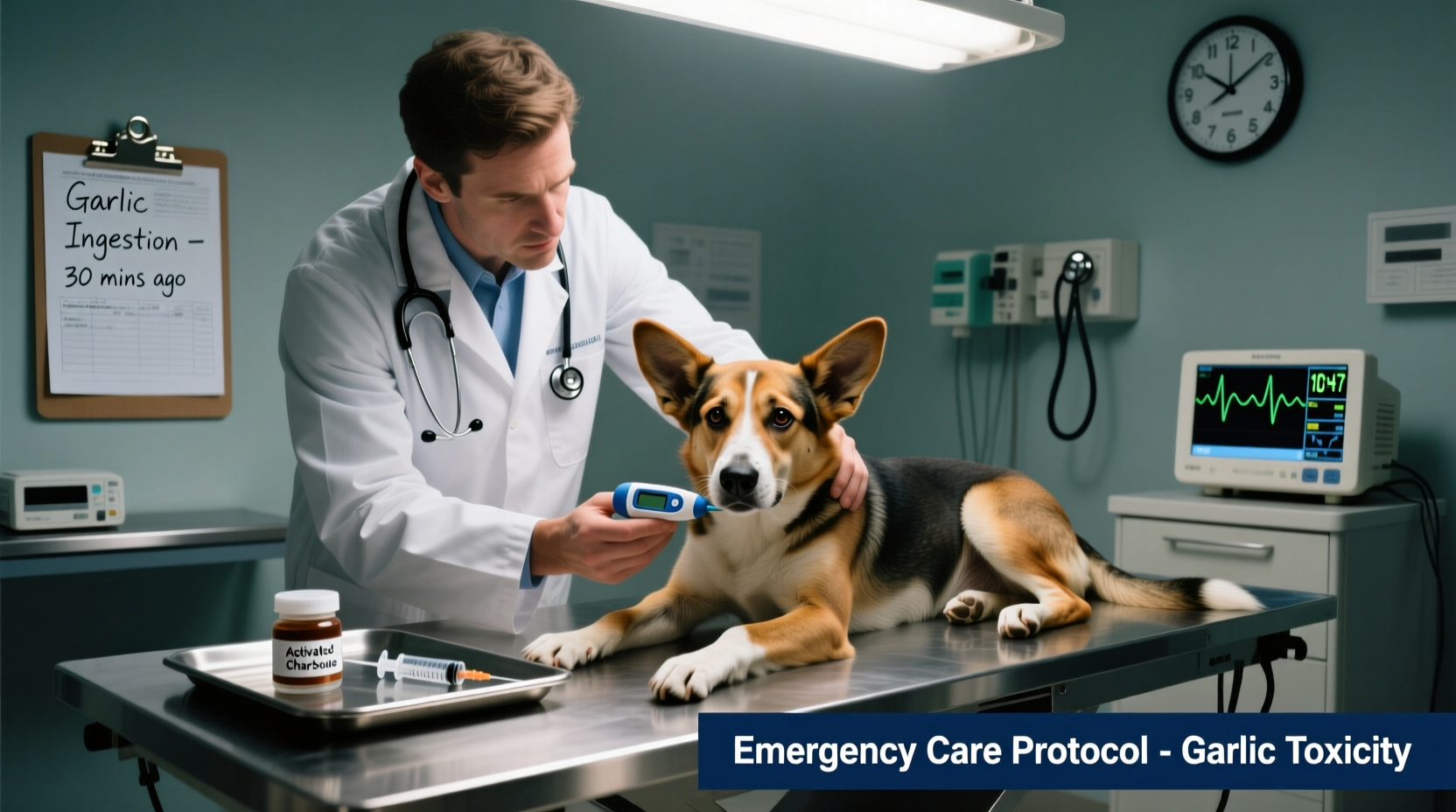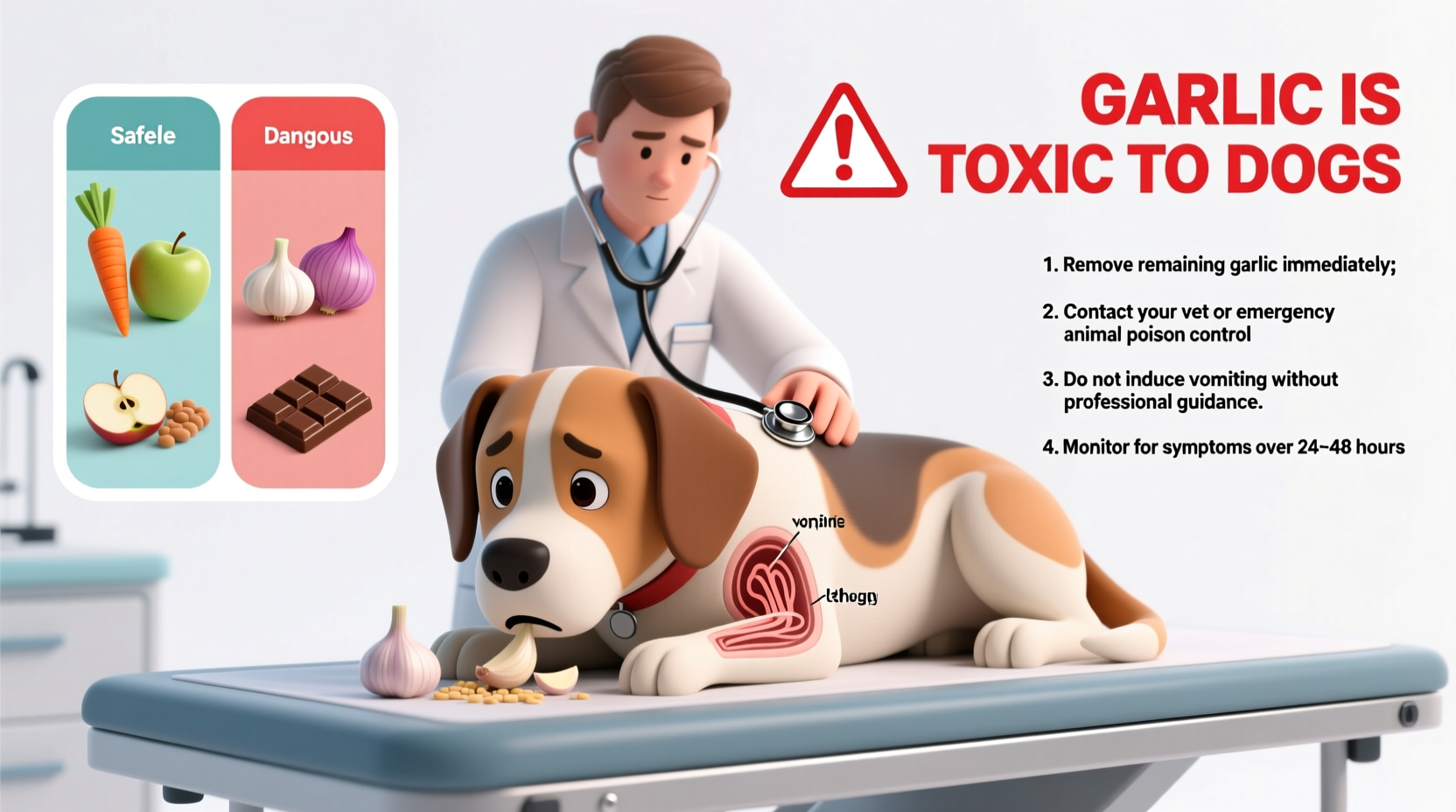Immediate Actions: First 5 Minutes Matter Most
When you discover your dog has eaten garlic, your response in the first few minutes determines outcomes. Do not induce vomiting unless specifically instructed by a veterinary professional - improper induction can cause additional complications.
| Time Since Ingestion | Critical Actions | What NOT to Do |
|---|---|---|
| 0-5 minutes | Remove remaining garlic, note amount consumed, call vet immediately | Don't wait to see symptoms |
| 5-15 minutes | Collect packaging/food remnants, measure approximate quantity eaten | Don't give milk or home remedies |
| 15-30 minutes | Follow vet's specific instructions, prepare for possible clinic visit | Don't delay seeking professional help |
Why Garlic Poses Serious Danger to Dogs
Garlic belongs to the Allium family, which includes onions, leeks, and chives - all toxic to dogs. The compound N-propyl disulfide causes oxidative damage to red blood cells, leading to hemolysis (rupturing of red blood cells). According to the ASPCA Animal Poison Control Center, dogs need only consume 15 to 30 grams of garlic per kilogram of body weight to experience toxic effects.

Symptom Timeline: What to Watch For
Garlic toxicity symptoms don't appear immediately. Understanding this progression helps you monitor effectively:
- 0-24 hours: Often no visible symptoms, though gastrointestinal upset may occur
- 24-72 hours: Lethargy, weakness, pale gums, rapid breathing
- 3-5 days: Jaundice (yellowing of gums/eyes), dark urine, collapse
The Veterinary Information Network reports that symptoms typically peak 3-5 days after ingestion as damaged red blood cells continue to rupture. Smaller dogs and certain breeds like Japanese breeds (Shiba Inu, Akita) face higher risks.
Professional Veterinary Treatment Process
When you reach a veterinary facility, expect these standard procedures:
- Assessment: Blood tests to check red blood cell count and methemoglobin levels
- Decontamination: Activated charcoal administration if ingestion was recent
- Supportive care: IV fluids, oxygen therapy, and in severe cases, blood transfusions
- Monitoring: 48-72 hour observation for developing anemia
According to the American Veterinary Medical Association, early intervention significantly improves outcomes. Most dogs recover fully with prompt treatment, but delayed care can lead to permanent organ damage or death.
Preventing Future Garlic Exposure
Protect your dog with these practical measures:
- Store garlic and onions in closed cabinets inaccessible to pets
- Dispose of food scraps in secured outdoor bins
- Read labels carefully - garlic powder appears in many commercial foods
- Train dogs with "leave it" commands using positive reinforcement
- Inform all household members about garlic dangers
Remember that garlic supplements marketed for human health often contain concentrated doses particularly dangerous to dogs. Even garlic-infused oils and broths pose risks.
When Home Monitoring Might Be Sufficient
While professional consultation is always recommended, the Merck Veterinary Manual indicates that minimal exposure might not require immediate emergency care under specific conditions:
- Dog weighs over 50 pounds
- Consumed less than 1 clove of garlic
- No symptoms appear within 24 hours
- Veterinarian confirms low-risk assessment
However, repeated small exposures can accumulate toxicity, so ongoing monitoring remains essential even in seemingly low-risk cases.











 浙公网安备
33010002000092号
浙公网安备
33010002000092号 浙B2-20120091-4
浙B2-20120091-4